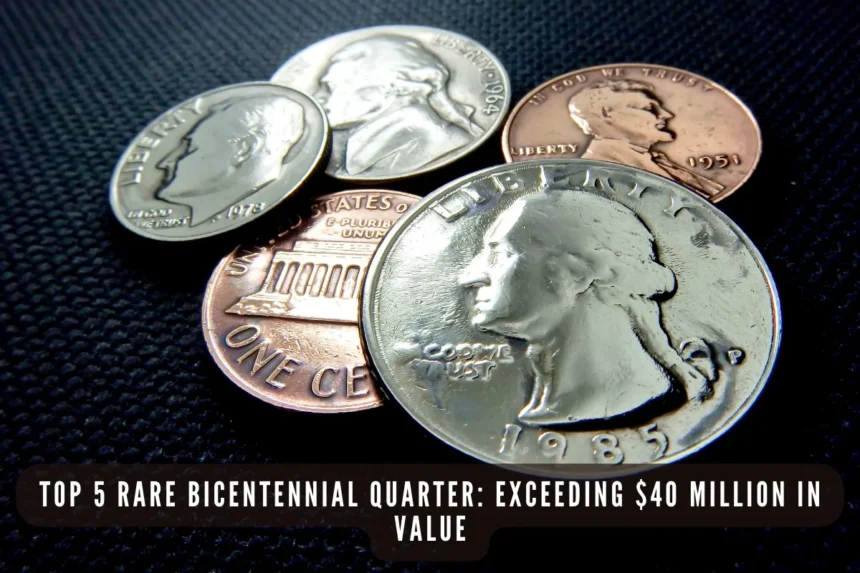The world of coin collecting is a vast and enchanting realm that captivates the dreams of enthusiasts, fueled by the anticipation of discovering rare treasures.
The thrill escalates as valuable coins, potentially worth millions, continue to circulate, injecting an element of excitement into mundane transactions.
This article delves into the captivating narratives surrounding some numismatic wonders, exploring their remarkable journey through time.
The 1894-S Barber Dime: A Time-Stranded Gem

Acclaimed as the “King of Dimes,” the 1894-S Barber Dime stands as a rarity with only 24 known specimens.
Today, a mere nine are believed to exist, rendering it a highly coveted coin among collectors.
The prospect of encountering such a gem in routine transactions borders on the unimaginable, contributing to its mystique.
The 1916-D Mercury Dime: A Centennial Marvel

Boasting a low mintage of just 264,000, the 1916-D Mercury Dime emerges as a centennial marvel commanding a substantial price.
Its distinctive design featuring the winged Liberty Head has entranced collectors across generations.
The notion that this historical piece might still circulate adds an element of astonishment, given its rarity.
The 1942/1 Mercury Dime Overdate: An Anomaly in Numismatics

A prominent error in coinage history, the 1942/1 Mercury Dime results from the accidental overdating of the die.
With an estimated 10,000 in circulation, this error coin showcases the intricacies of a minting process gone awry.
Discovering such a numismatic anomaly amid everyday pocket change is a true rarity.
The 1916 Standing Liberty Quarter: Symbolizing American Heritage

Representing American heritage, the 1916 Standing Liberty Quarter underwent modifications due to public outcry.
With a mintage of just 52,000, this coin is deemed a key date in the series.
The prospect of encountering it in circulation serves as a testament to the unexpected treasures within ordinary transactions.
The 1873-CC No Arrows Liberty Seated Dime: A Western Rarity

Originating from the Carson City Mint, the 1873-CC No Arrows Liberty Seated Dime is a Western rarity with a mintage of only 12,400.
Its scarcity is heightened by its production for just one year, underscoring the reminder that history is closer than anticipated.
The Enigmatic World of Numismatic Discoveries
The expansive realm of coin collecting unveils dreams harbored by enthusiasts worldwide.
The allure of stumbling upon valuable coins, potentially worth millions, in everyday transactions injects a sense of thrill into the act of handling change.
As daily transactions unfold, the prospect of encountering numismatic wonders serves as a reminder that history and fortune can intertwine in the most unexpected places.
The Intricate History of Coin Anomalies
Beyond the rarity of specific coins lies the intriguing world of anomalies in coinage.
These unexpected variations and errors add a layer of complexity to the numismatic landscape, making the pursuit of rare coins even more fascinating for collectors.
The Mystery of Misprints: Unraveling the 1942/1 Mercury Dime Overdate
The 1942/1 Mercury Dime, with its overdated die, stands as a testament to the unpredictability of the minting process.
The accidental error in dating the coin has created a unique piece with an estimated circulation of 10,000.
Exploring the nuances of misprints adds an extra dimension to the world of coin collecting.
Key Dates and Modifications: Decoding the Significance of the 1916 Standing Liberty Quarter
The 1916 Standing Liberty Quarter, representing American heritage, underwent modifications in response to public feedback.
With a mintage of just 52,000, this coin holds a special place in the series.
Understanding the historical context and the reasons behind modifications enriches the collector’s experience.
Unveiling the Rarity of Western Minting: The 1873-CC No Arrows Liberty Seated Dime
Originating from the Carson City Mint, the 1873-CC No Arrows Liberty Seated Dime is not only rare due to its low mintage of 12,400 but also because it was produced for just one year.
Delving into the history of Western minting practices adds a layer of regional uniqueness to this numismatic rarity.
Centennial Marvels and Their Enduring Allure
The 1916-D Mercury Dime, with its low mintage of 264,000, stands as a centennial marvel that continues to capture the imagination of collectors.
The distinctive design featuring the winged Liberty Head adds to its enduring allure.
Exploring the stories behind centennial marvels enhances the appreciation for these remarkable coins.
Conclusion
The enchanting world of coin collecting unfolds with tales of unexpected discoveries and concealed treasures.
As the allure of valuable coins worth millions continues to circulate, the routine act of handling change gains an air of mystery and excitement.
The stories behind coins like the 1894-S Barber Dime, 1916-D Mercury Dime, 1942/1 Mercury Dime, 1916 Standing Liberty Quarter, and 1873-CC No Arrows Liberty Seated Dime contribute to the rich tapestry of numismatics, reminding us that history and fortune can intertwine in the most unexpected places.
Frequently Asked Questions (FAQs)
Q1: How often do rare coins like the 1894-S Barber Dime appear in circulation?
A1: Rare coins like the 1894-S Barber Dime are exceptionally rare in circulation due to their limited mintage. Encountering such a coin in everyday transactions is a truly extraordinary event.
Q2: What factors contribute to the value of a rare coin?
A2: Several factors contribute to the value of a rare coin, including its rarity, condition, historical significance, and demand among collectors.
Q3: Are there other notable errors in coinage history similar to the 1942/1 Mercury Dime?
A3: Yes, there are several notable errors in coinage history, such as double strikes, off-center strikes, and misaligned dies, each adding a unique aspect to the world of numismatics.
Q4: How do collectors authenticate the rarity of coins like the 1916 Standing Liberty Quarter?
A4: Collectors often rely on experts, historical records, and grading services to authenticate the rarity and provenance of coins. Detailed examination and documentation are crucial in this process.
Q5: Is coin collecting a profitable investment?
A5: While some rare coins can appreciate in value over time, the profitability of coin collecting depends on various factors, including market trends, collector demand, and the condition of the coins.

